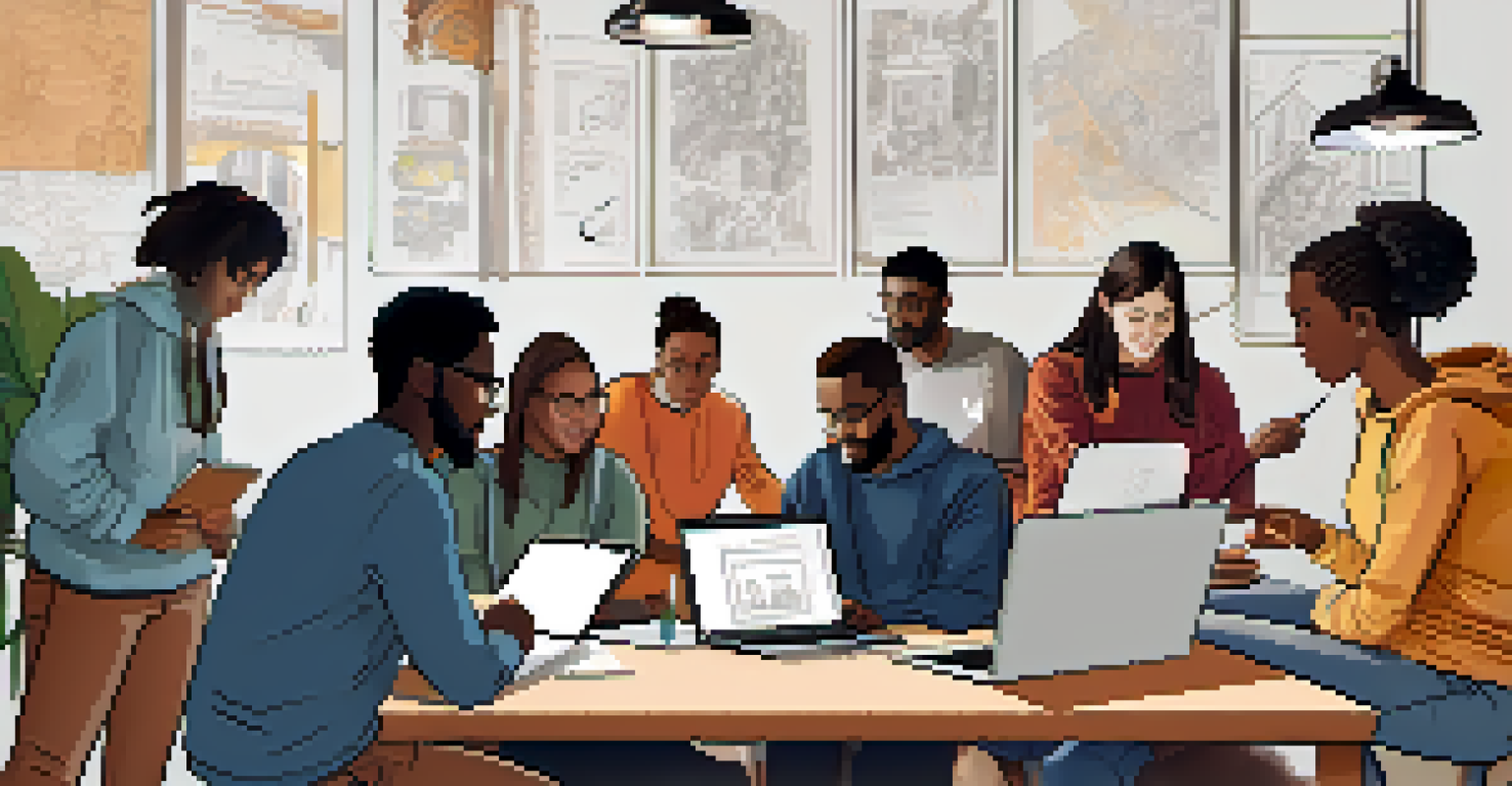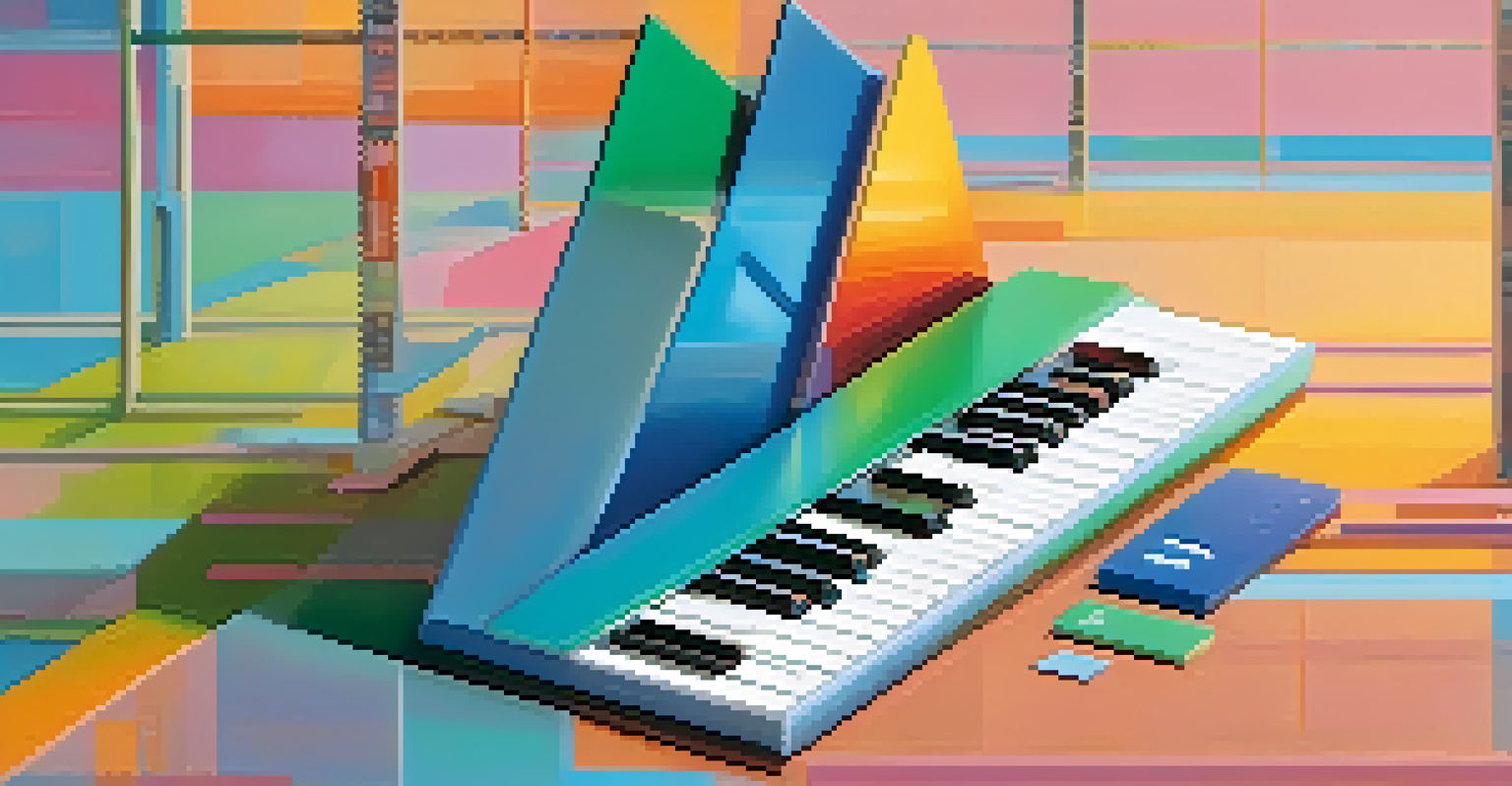Accessibility in NFT Platforms: Ensuring Inclusivity

Understanding Accessibility in the Digital Space
Accessibility in the digital realm refers to making online content usable for everyone, including people with disabilities. Just as a ramp allows wheelchair users to access a building, digital accessibility ensures that all users can navigate websites and platforms. In the context of NFT platforms, this means creating an inclusive environment where artists and collectors of all backgrounds can participate.
Accessibility allows us to unlock the doors of opportunity for everyone, regardless of their abilities.
With the rise of Non-Fungible Tokens (NFTs), the importance of accessibility has come to the forefront. Many people may not realize that the digital art world can be challenging for individuals with visual impairments or cognitive disabilities. Therefore, understanding and implementing accessibility standards can help bridge this gap, allowing everyone to enjoy and engage with digital art.
By prioritizing accessibility, NFT platforms not only comply with legal requirements but also expand their audience base. This inclusivity can lead to a richer community, fostering creativity and innovation that benefits everyone. Ultimately, understanding accessibility is the first step toward creating a welcoming environment for all users.
Barriers Facing Users with Disabilities
Despite the potential of NFTs, many users with disabilities encounter significant barriers. For instance, individuals with visual impairments may struggle to interact with platforms that lack screen reader compatibility. Similarly, those with motor disabilities might find it challenging to use interfaces that require precise mouse movements, leading to frustration and disengagement.

Moreover, the jargon often used in the NFT space can be overwhelming for new users, particularly those with cognitive disabilities. Terms like 'minting' or 'gas fees' can create confusion, making it harder for these individuals to participate fully. This highlights the need for clear, straightforward language that everyone can understand.
Accessibility is Essential for NFTs
Ensuring accessibility in NFT platforms allows everyone, including those with disabilities, to engage with digital art fully.
Addressing these barriers is crucial for fostering an inclusive NFT community. By identifying and removing obstacles, platforms can ensure that all users have the opportunity to explore, create, and invest in digital art without unnecessary hindrance.
Implementing Accessible Design Principles
Accessible design is all about creating experiences that work for everyone. This includes using high-contrast colors for better visibility, ensuring that text is readable, and providing alternative text for images. By adopting these principles, NFT platforms can significantly enhance usability for individuals with various disabilities.
Inclusion is not a matter of political correctness. It is the key to growth.
Another important aspect of accessible design is keyboard navigation. Many users rely solely on their keyboards to interact with digital content, so ensuring that all features are accessible via keyboard shortcuts is essential. This simple adjustment can drastically improve the experience for users with motor impairments.
Additionally, incorporating user feedback in the design process is a vital step towards accessibility. By engaging with the community and understanding their needs, NFT platforms can create a more inclusive environment tailored to diverse user experiences. This collaborative approach not only improves accessibility but also fosters a sense of belonging among users.
The Role of Community in Accessibility
Building an accessible NFT platform is not just the responsibility of the developers; the community plays a crucial role too. Engaging users with disabilities in discussions about their needs can provide invaluable insights into how to improve accessibility features. This collaborative effort can lead to innovative solutions that benefit everyone in the ecosystem.
Furthermore, community-driven initiatives can raise awareness about accessibility issues in the NFT space. By sharing stories and experiences, users can highlight the importance of inclusivity and encourage platforms to prioritize these values. This grassroots movement can drive significant change within the industry.
Community Involvement Drives Change
Engaging users with disabilities in discussions about accessibility can lead to innovative solutions and a more inclusive NFT environment.
Ultimately, a strong community that advocates for accessibility fosters a culture of inclusivity. When everyone is encouraged to contribute and share their perspectives, it creates a richer, more diverse NFT landscape that celebrates creativity in all its forms.
Legal and Ethical Responsibilities of NFT Platforms
NFT platforms have both legal and ethical responsibilities to ensure accessibility. Laws like the Americans with Disabilities Act (ADA) in the United States set standards for digital accessibility, meaning that platforms must comply or risk facing legal consequences. However, beyond legal obligations, there is a moral imperative to create an inclusive environment for all users.
Ethically, prioritizing accessibility demonstrates a commitment to diversity and equality. It shows that platforms value the contributions of all artists and collectors, regardless of their abilities. This commitment can enhance a platform's reputation and foster loyalty among users who appreciate inclusivity.
Moreover, as the NFT market continues to grow, accessibility will become increasingly important in attracting a diverse audience. By taking proactive steps to comply with legal standards and embracing ethical responsibilities, NFT platforms can position themselves as leaders in the industry, setting a positive example for others to follow.
Future Trends in Accessibility for NFT Platforms
As technology evolves, so too do the opportunities for enhancing accessibility in NFT platforms. Emerging technologies like artificial intelligence and machine learning can help create more inclusive experiences. For example, AI-powered tools can automatically generate alt text for images, making them accessible to visually impaired users.
Additionally, the rise of virtual and augmented reality presents new opportunities for accessibility in the NFT space. By designing immersive experiences that cater to various needs, platforms can create a more engaging environment for all users. This could include features like customizable interfaces that adapt to individual preferences.
Legal and Ethical Duty to Include
NFT platforms must comply with accessibility laws and embrace ethical responsibilities to create an inclusive community that values all contributions.
Looking ahead, the focus on accessibility will likely grow as more users demand inclusive experiences. NFT platforms that prioritize accessibility not only comply with regulations but also stand out in a crowded marketplace. By embracing future trends, they can ensure that everyone has a seat at the digital art table.
Conclusion: Embracing Inclusivity in the NFT Space
In conclusion, ensuring accessibility in NFT platforms is a vital step toward creating a more inclusive digital art community. By understanding the barriers users face and implementing accessible design principles, platforms can foster an environment where everyone can participate. The role of the community and the ethical responsibilities of platforms further emphasize the importance of inclusivity.
As we look to the future, advancements in technology offer exciting possibilities for enhancing accessibility. Platforms that prioritize inclusivity will not only comply with legal standards but also create a richer, more diverse community that celebrates creativity in all its forms. This commitment to accessibility will ultimately benefit the entire NFT ecosystem.

By embracing inclusivity, NFT platforms can lead the way in creating a digital landscape where everyone, regardless of ability, can explore, create, and enjoy the world of Non-Fungible Tokens. The journey toward accessibility is ongoing, but with collective effort, we can make significant strides toward a more inclusive future.